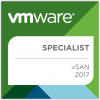Now that Network Virtualization and Software Defined Network are becoming mainstream, there is a new trend in networking: Software-Defined WAN (SD-WAN).
What is SD-WAN? SD-WAN is best defined as traffic monitoring and management from physical devices to the application itself, capitalizing on flexibility and agility. This intelligent routing is abstracted into a virtual overlay, enabling a secured pooling of both private and public connections allowing for automation, centralized network control and real-time management across multiple links.













